Objective functions and system optimisation
Discrete Event Simulation in Python

Diogo Costa (PhD, MSc)
Adjunct Professor, University of Saskatchewan, Canada & CEO of ImpactBLUE-Scientific
System optimization
System optimization
- Identifying optimal operational configuration
Human-driven processes
- Maximum output with least costs (fewer resources, less time)
Identifying processes with higher impact on system output
Monte-Carlo sampling
- Measure success and rank results
Objective functions
- Target function to sets performance goals
Objective function
Math expression describing output target
Score simulation scenarios
Example
- Process A: 35%
- Process B: 20%
- Process C: 45%
Total: 100%
- Process C has highest weight
Search & Stop: Run different model configurations and stop when desired condition is met
while total_duration < 24:
model_to_run()
Score & Rank: Score simulation results based on weighing criteria
for i in range(num_runs):
out_1, out_2 = model_to_run(i)
scores(i) = 0.3 * out_1 + 0.7 * out_2
Approach 1: Search & Stop
- Monte Carlo sampling to run multiple scenarios
- Consists of different non-deterministic processes occurrences
- Optimal scenario search loop is interrupted when condition is meet
Example
scenario_num = 0
while scenario_num == 0 or total_duration[s] > 40:
scenario_num += 1
env = simpy.Environment()
env.process(manufractoring_proc(env))
env.run()
plot_results()
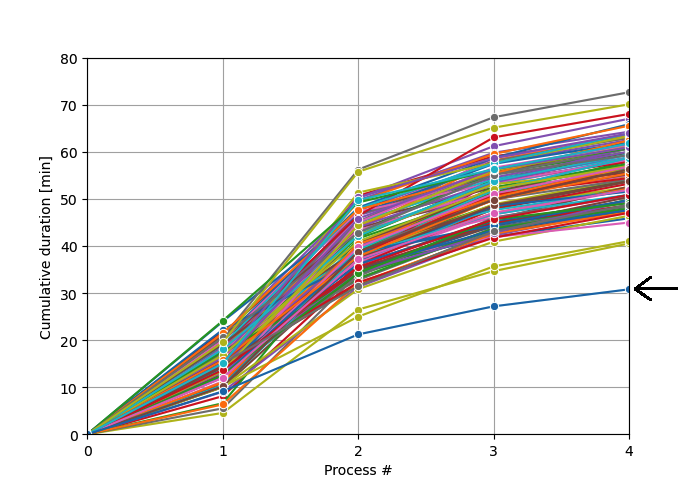
Approach 2: Score & Rank
- Monte Carlo sampling to run multiple scenarios
- Score and rank results
Example: Manufacturing industry
Involving various sequential tasks (or processes), such as a car production line.
def objective_function_calc():
score_objfunc = np.ones(num_scenarios)
for s in range(num_scenarios):
for p in range(len(processes)):
score_objfunc[s] +=
processes[p]["duration_hours"]
* processes[p]["score_weight"]
Approach 2: Score & Rank
Score
"RED": Low score; "BLUE": High score
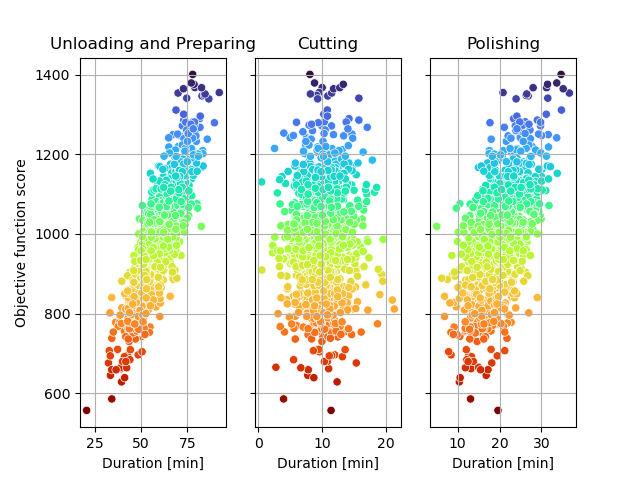
Rank
Score-ranking simulation runs
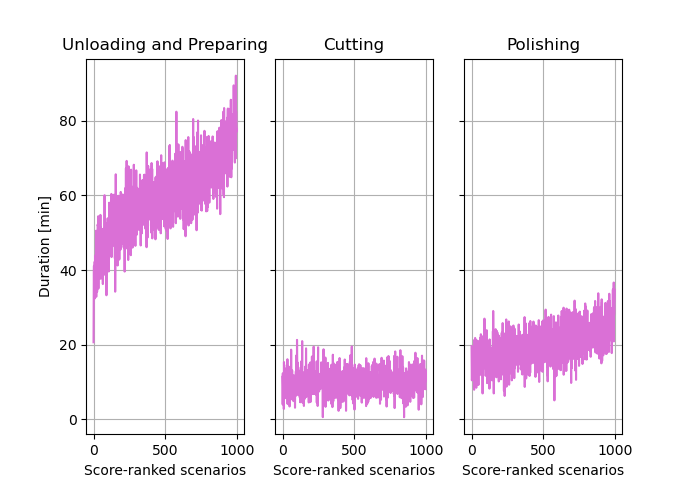
Identifying critical processes that limit performance
Search & stop
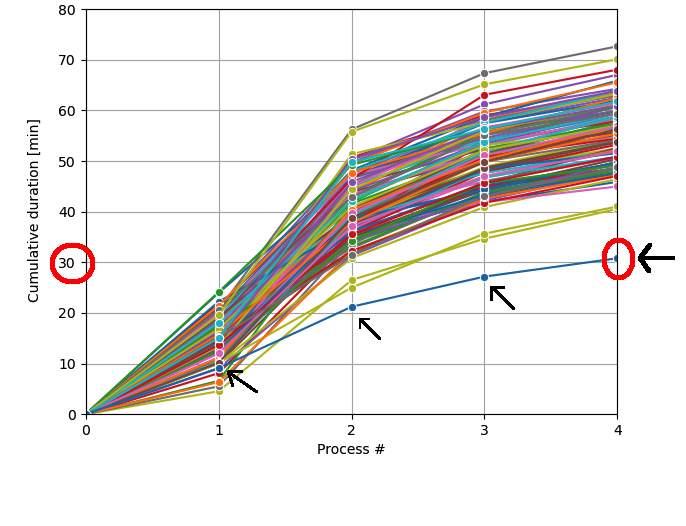
"Blue" line met the "stop" criteria
- Total duration = 30 min
Breakdown results of "best" simulation:
- Process 1: about 10 min (
sum = 20 min) - Process 2: about 10 min (
sum = 20 min) - Process 3: about 8 min (
sum = 28 min) - Process 4: about 2 min (
sum = 30 min)
- Process 1: about 10 min (
"Process 1" critical to achieve this goal
Identifying critical processes that limit performance
Score
Objective: lowest score = lowest duration
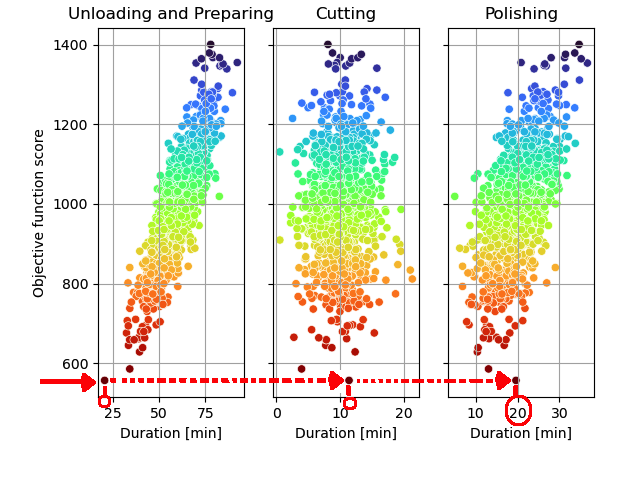
Rank
"Process 1" critical to achieve this goal
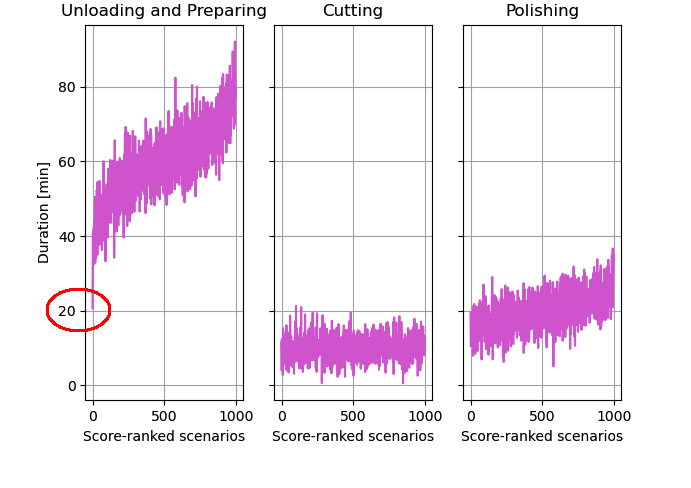
Let's practice!
Discrete Event Simulation in Python

